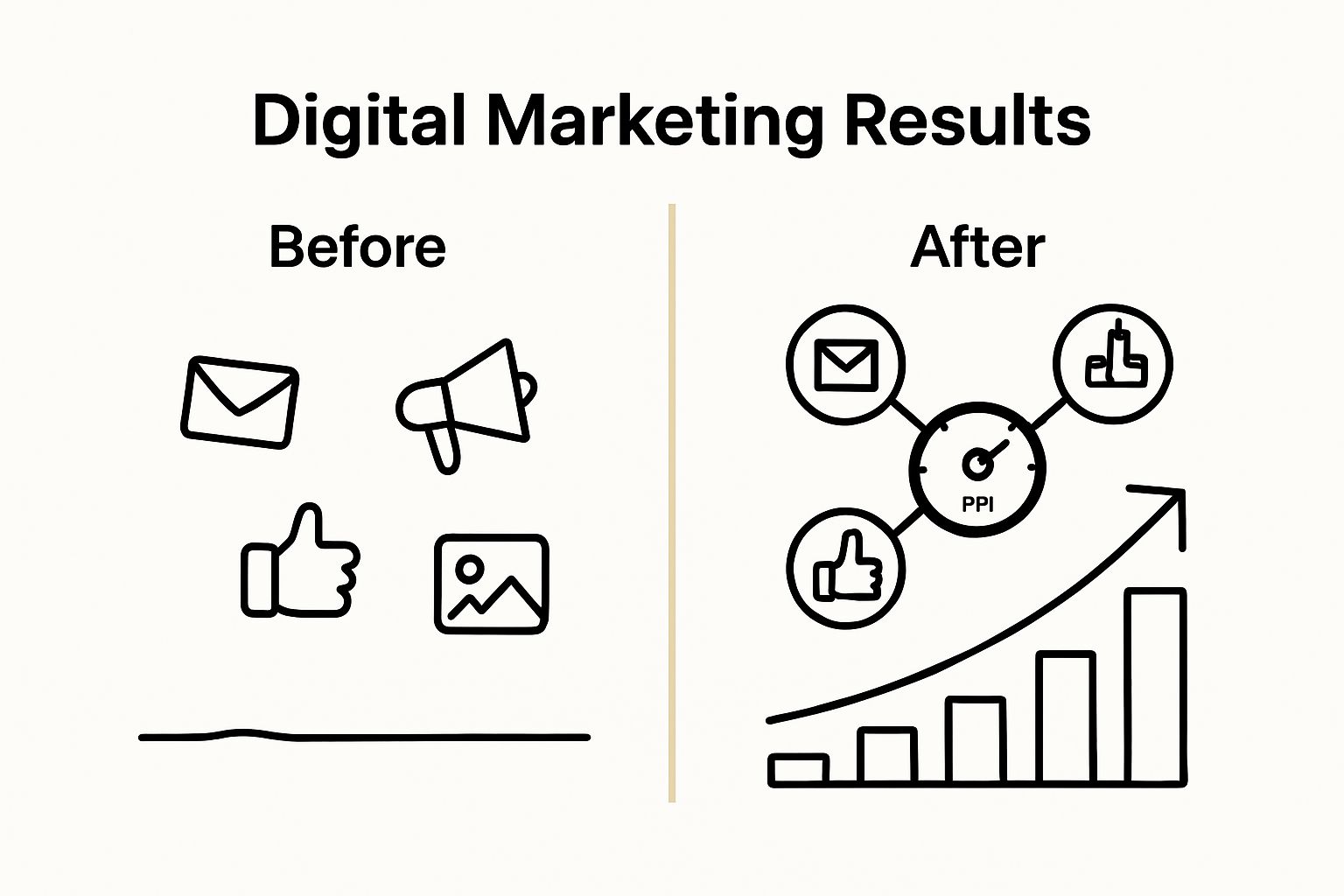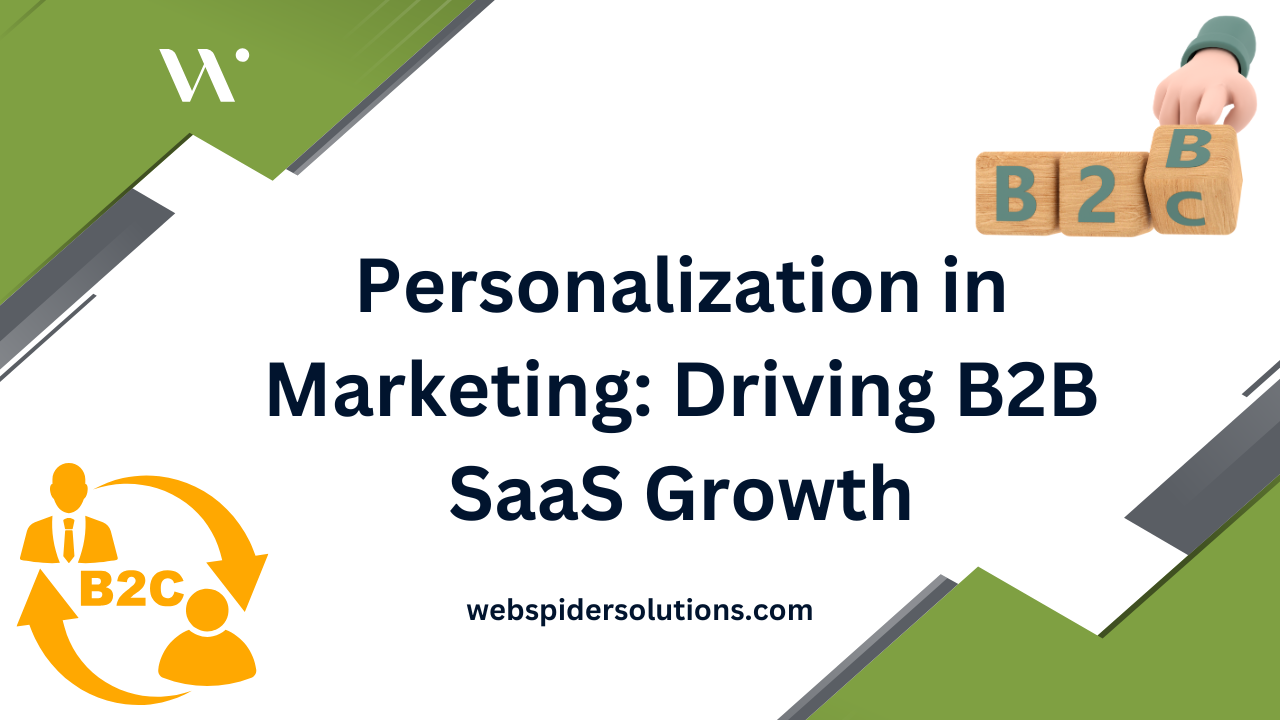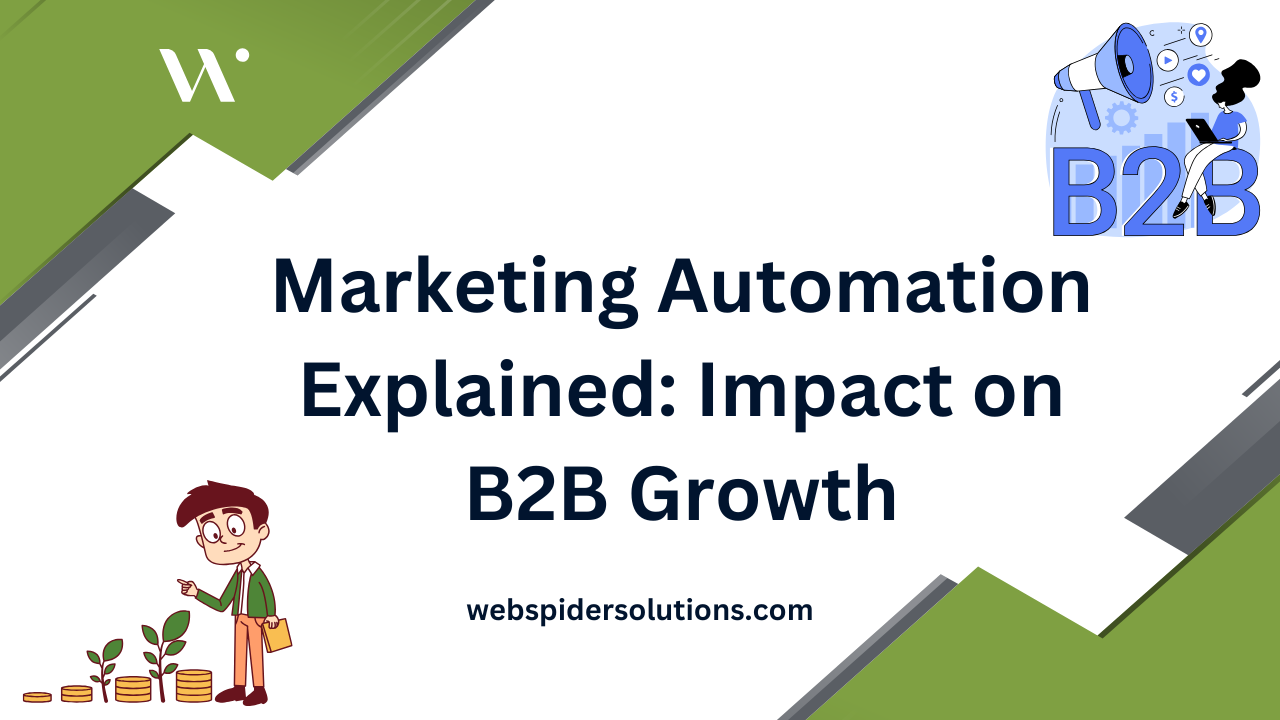Digital marketing strategies might look easy at first glance, but the real magic happens when every step is backed by hard data and sharp insights. Most marketers overlook just how much a clear audience definition can impact your entire strategy, acting like a compass for every decision. Surprising as it sounds, the best results come from constantly evolving your approach, not from one big plan you set and forget.
Table of Contents
- Step 1: Define Your Target Audience And Goals
- Step 2: Conduct A Comprehensive Market Analysis
- Step 3: Establish Your Unique Value Proposition
- Step 4: Select Appropriate Digital Marketing Channels
- Step 5: Create A Tactical Content Plan
- Step 6: Measure And Optimize Your Marketing Efforts
Quick Summary
| Key Point | Explanation |
|---|---|
| 1. Define Your Audience Clearly | Create detailed audience personas based on demographics and behaviors to guide marketing decisions effectively. |
| 2. Set SMART Goals | Establish specific, measurable, achievable, relevant, and time-bound objectives to focus marketing strategies. |
| 3. Conduct In-Depth Market Analysis | Systematically analyze competitors and market trends to uncover strategic advantages and opportunities. |
| 4. Articulate Your Unique Value Proposition | Clearly state how your solution uniquely addresses customer pain points and differentiate from competitors. |
| 5. Continuously Measure and Optimize | Use performance metrics and feedback loops for ongoing improvements to your digital marketing efforts. |
Step 1: Define Your Target Audience and Goals
Successful digital marketing strategy planning starts with crystal clear audience understanding and precise goal setting. Before diving into tactics and campaigns, you need a solid foundation that transforms scattered marketing efforts into a targeted approach. Your audience definition becomes the compass guiding every subsequent marketing decision.
Begin by creating comprehensive audience personas that go beyond basic demographics. Look deeper into behavioral patterns, pain points, digital behaviors, and specific challenges your potential customers face. Quantitative research matters, but qualitative insights provide the real strategic advantage. Conduct surveys, analyze existing customer data, review website analytics, and examine social media interactions to build multidimensional audience profiles.
Goal setting requires equal precision. Your objectives should follow the SMART framework: Specific, Measurable, Achievable, Relevant, and Time-bound. Instead of vague statements like “increase website traffic,” craft precise targets such as “increase organic website traffic by 35% within six months through targeted SEO and content marketing strategies.” Learn more about developing strategic digital marketing goals.
When mapping audience segments, consider creating distinct profiles that capture different customer archetypes. A technology company might have personas like:
- The Tech-Savvy Professional: Mid-30s, digital native, values efficiency and cutting-edge solutions
- The Strategic Decision Maker: Senior executive seeking comprehensive, data-driven marketing approaches
Verify your audience definition by cross-referencing multiple data sources and continuously refining your understanding. Successful digital marketing strategy planning isn’t a one-time exercise but an ongoing process of audience insights and strategic refinement.
Below is a checklist summarizing the critical verification steps for each stage of effective digital marketing strategy planning, helping ensure that essential actions are not missed.
| Stage | Verification Criteria |
|---|---|
| Define Target Audience and Goals | Cross-reference audience data and refine personas regularly |
| Conduct Market Analysis | Articulate actionable insights from research |
| Establish Value Proposition | Test for clarity, specificity, and relevance to audience needs |
| Select Marketing Channels | Track initial performance and be willing to pivot as needed |
| Create Tactical Content Plan | Align content to personas, formats, and track with performance metrics |
| Measure and Optimize Efforts | Consistently track KPIs and adjust tactics based on data |
Step 2: Conduct a Comprehensive Market Analysis
Market analysis transforms raw data into strategic insights that power your digital marketing approach. This critical step bridges audience understanding with actionable marketing strategies, revealing hidden opportunities and potential competitive advantages that can dramatically shape your digital marketing trajectory.
Start by mapping your competitive landscape through systematic research. Utilize tools like Google Analytics, SEMrush, and industry-specific platforms to gather comprehensive data about market trends, competitor performance, and emerging digital channels. Systematic competitor analysis means looking beyond surface-level metrics and understanding the underlying strategies driving their success. Examine their content marketing approaches, social media engagement rates, keyword strategies, and overall digital footprint.
Market research strategies from the Small Business Administration recommend a multifaceted approach to gathering intelligence. Analyze not just direct competitors, but also adjacent businesses and potential disruptors in your industry. Look for gaps in their digital marketing strategies that you can potentially exploit. This might involve identifying underserved audience segments, content topics with high potential but low competition, or emerging digital channels your competitors have overlooked.
Your market analysis toolkit should include both quantitative and qualitative research methods. Leverage these key investigative techniques:
- Keyword research tools to understand search volume and content opportunities
- Social listening platforms to track industry conversations and sentiment
- Competitor website and content audits to identify strategic openings
Verification of a thorough market analysis comes through actionable insights. If you can articulate specific opportunities, potential challenges, and clear strategic directions based on your research, you’ve successfully completed this crucial step. Explore our comprehensive guide on developing digital marketing strategies to refine your analytical approach and transform research into executable marketing plans.
Step 3: Establish Your Unique Value Proposition
Your unique value proposition represents the strategic cornerstone that distinguishes your brand in a crowded digital marketplace. More than a marketing slogan, it’s a precise articulation of why customers should choose your solution over every alternative available. Crafting a compelling value proposition requires deep understanding of your audience’s core challenges and your distinctive approach to solving them.
Begin by conducting an introspective analysis of your business strengths. Examine what truly sets you apart from competitors not just in features, but in fundamental problem-solving capabilities. Authentic differentiation emerges from understanding the intersection between your unique capabilities and your customers’ most pressing needs. This means moving beyond surface-level comparisons and diving into the transformative impact your product or service delivers.
Research on competitive positioning suggests developing a value proposition that addresses specific pain points with concrete, measurable benefits. Articulate not just what you do, but the specific outcomes customers can expect. Instead of generic statements like “we provide great service,” construct precise declarations such as “we reduce operational costs by 40% through streamlined digital solutions tailored to your industry’s unique challenges.”
Validate your value proposition by testing it against these critical criteria:
- Clarity: Can a potential customer understand your unique benefit in 5 seconds?
- Specificity: Does your statement quantify the exact value you provide?
- Relevance: Does it directly address your target audience’s most significant challenges?
The ultimate verification of a strong value proposition is its ability to convert audience interest into genuine engagement. A well-crafted statement should immediately resonate with your ideal customers, compelling them to learn more. Explore our comprehensive guide on developing compelling digital marketing strategies to refine your unique market positioning and transform your value communication approach.
Step 4: Select Appropriate Digital Marketing Channels
Selecting the right digital marketing channels transforms your strategy from theoretical planning to practical execution. Channel selection is not about being everywhere, but being strategic about where your target audience actually engages. This step requires careful alignment between your audience personas, business objectives, and the unique characteristics of each digital platform.
Begin by matching your audience research with channel demographics and behavioral patterns. Different platforms serve different purposes and attract distinct user segments. LinkedIn works exceptionally well for B2B professional services, while Instagram might be ideal for visually driven consumer brands. Comprehensive channel selection means understanding the nuanced ecosystem of digital communication, not just selecting platforms based on popularity.
Digital marketing strategy research emphasizes the importance of multi-channel integration. Rather than treating each platform as an isolated tactic, develop a cohesive narrative that translates across channels. This might involve creating platform-specific content that maintains a consistent brand voice and messaging strategy.
Your channel selection toolkit should prioritize platforms that offer:
- High engagement potential with your target demographic
- Measurable performance metrics
- Alignment with your content creation capabilities
Verification of effective channel selection comes through initial performance tracking and willingness to pivot. Monitor key metrics like engagement rates, conversion potential, and audience growth during the first few months.
The table below compares distinct digital marketing channels mentioned in the article, highlighting their typical use cases, target audience alignment, and key strengths for strategic channel selection.
| Channel | Best For | Target Audience Example | Key Strength |
|---|---|---|---|
| B2B services, professionals | Strategic Decision Makers | Professional networking, lead gen | |
| Visual consumer brands | Tech-Savvy Professionals | High visual engagement, brand awareness | |
| Google Ads | Search-based acquisition | Varied by intent | Demand capture, audience targeting |
| Broad consumer outreach | General consumers | Detailed targeting, wide reach | |
| YouTube | Video-driven engagement | Learning-oriented audiences | Education, visual storytelling |

Step 5: Create a Tactical Content Plan
A tactical content plan transforms your marketing strategy from abstract concept to executable roadmap. Your content plan serves as the strategic blueprint that guides every piece of communication across digital channels, translating audience insights into purposeful, engaging material that drives meaningful business outcomes.
Begin by developing a comprehensive content matrix that maps specific content types to each stage of your customer journey. This means creating targeted content that speaks directly to potential customers whether they are discovering your brand, considering your solutions, or preparing to make a purchase. Effective content planning requires understanding the precise information needs of your audience at each decision-making stage, crafting narratives that smoothly guide prospects from initial awareness to final conversion.
Content marketing research emphasizes the importance of developing a balanced content ecosystem. This involves diversifying your content formats to include blog posts, videos, infographics, podcasts, and interactive experiences that cater to different learning preferences and consumption habits. Your goal is building a robust content library that provides value, builds trust, and positions your brand as an authoritative voice in your industry.
Verify the strength of your content plan by assessing these critical elements:
- Alignment with audience personas and journey stages
- Diversity of content formats and distribution channels
- Clear performance metrics and tracking mechanisms
The ultimate test of a tactical content plan is its ability to consistently generate engagement and drive desired business outcomes. Explore our comprehensive guide on content marketing strategies to refine your approach and develop a more sophisticated content ecosystem that resonates with your target audience. Remember, great content is not just about creation, but about creating meaningful connections that transform casual readers into loyal customers.
Step 6: Measure and Optimize Your Marketing Efforts
Measurement and optimization represent the critical final stage of your digital marketing strategy, transforming raw data into actionable insights that drive continuous improvement. Effective measurement is not about collecting numbers, but about understanding the story behind those metrics and using that narrative to refine your approach.
Establish a comprehensive measurement framework that goes beyond surface-level metrics. Instead of simply tracking vanity metrics like page views or likes, focus on meaningful performance indicators that directly connect to your business objectives. This means developing a nuanced dashboard that tracks conversion rates, customer acquisition costs, engagement depth, and long-term value creation. Sophisticated marketers recognize that true performance measurement requires looking at interconnected metrics that reveal the holistic impact of your digital marketing efforts.
Research on marketing performance evaluation emphasizes the importance of setting clear, measurable key performance indicators (KPIs) aligned with your original strategic goals. Implement robust analytics tools like Google Analytics, SEMrush, or platform-specific insights to gather comprehensive data across your digital channels. The goal is creating a real-time feedback loop that allows rapid strategic adjustments.
Verify the effectiveness of your optimization process through these critical assessment criteria:
- Consistent tracking of predefined KPIs
- Regular performance review intervals
- Willingness to experiment and pivot based on insights
The ultimate mark of a successful marketing optimization strategy is its ability to generate incrementally improving results over time. Discover advanced techniques for boosting your digital marketing ROI to transform data into a powerful strategic asset. Remember, optimization is not a destination but a continuous journey of learning, adapting, and refining your digital marketing approach.

Ready to Transform Your Digital Marketing From Plan to Impact?
Building an effective digital marketing strategy is challenging. You want to reach the right audience, set measurable goals, discover your unique value, and optimize your results—yet most businesses struggle to move from planning to real, measurable growth. If you have ever wondered how to stand out, fill gaps in your market research, or get more from your digital campaigns, you are not alone. The steps from audience research to tactical execution outlined in this article match the very pain points B2B leaders face every day.
At Web Spider Solutions, this is what we do best. Our proven digital marketing framework brings your strategy to life. Whether you need targeted SEO, powerful paid advertising solutions, or a cohesive, results-driven content plan, our team turns every insight into real business growth. If you are ready to outpace your competition and want lasting results, do not let your strategy stay on paper. Visit Web Spider Solutions right now and request a custom consultation. Your growth story starts with a single, decisive action—take it today.
Frequently Asked Questions
How can I define my target audience for an effective digital marketing strategy?
To define your target audience, create detailed audience personas that encompass behavioral patterns, challenges, and preferences beyond basic demographics. Conduct surveys, analyze existing customer data, and use website analytics to shape these profiles.
What are SMART goals, and how do I set them for my marketing strategy?
SMART goals are Specific, Measurable, Achievable, Relevant, and Time-bound objectives. For example, instead of aiming to “increase website traffic”, set a goal to “increase organic website traffic by 35% within six months through targeted SEO efforts.”
What should I include in a comprehensive market analysis for digital marketing?
Include competitive landscape mapping, keyword analysis, and social media engagement metrics. For best results, analyze both direct and indirect competitors to identify gaps in their strategies that you can exploit.
How can I create a unique value proposition that resonates with my audience?
Develop a value proposition by identifying what sets your offerings apart in terms of solving customer problems. Focus on clear, measurable benefits, such as stating “we reduce costs by 30% through our tailored solutions.”
Which digital marketing channels are most effective for my target audience?
Select channels based on where your target audience engages most actively, like LinkedIn for B2B and Instagram for B2C. Match your audience insights with channel demographics to ensure effective communication.
How can I measure and optimize my digital marketing efforts effectively?
Establish key performance indicators (KPIs) aligned with your business objectives, such as conversion rates and customer acquisition costs. Regularly track these metrics to assess and refine your marketing tactics, aiming for continuous improvement in results over time.











